Continuing in the theme of Artificial Intelligence (covered in part 1), Carlo Ratti presented some exciting work from the MIT Senseable Cities Lab. Standouts were a trackable waste project where members of the public brought in 3000 pieces of garbage which were then fitted with GPS sensors and tracked, with alarming results. Some objects made it across America and were still on the move after two months. The project increased awareness of recycling and changed participants' garbage disposal behaviours.
Carlo then demonstrated that the implication of self-driving cars in the future will extend beyond safety (eliminating human error - the cause of over 90% of road traffic accidents) to reducing congestion. Traffic lights would be eliminated and a slot-system used by interconnected cars sensing each other's position to avoid collision. The potential use of one self-driving car to drive all the members of a family (and their friends/neighbours) to their respective destinations, blurring the lines between private and public transport, is an interesting prospect too. With such a system, cities could meet all residents' current transport requirements with only 20% of the number of cars that are currently on the road, based on journey research done in New York. Imagine the reduction in traffic, congestion and improvement to air quality?! Lastly, Carlo showed us a video of UAV-enabled app, SkyCall, created to respond to requests from MIT visitors to guide them to whichever room number they tap into their app. The UAV talks the visitor though the sights on campus along the way. On a campus with hundreds of rooms scattered over a vast area it's a cool idea. I wonder if it could be used for events; Directing people to the correct seat at a fashion show, or the theatre, perhaps. Check it out here:

Image: Technabob.com
The afternoon session was opened by Rene Redzepi and brought culinary adventure to proceedings with a detailed foray into the scientific experiments of the famous Danish restaurant he co-founded, Noma.
Noma create flavours. They seek not to use ingredients for dishes but to make building blocks of flavour that can then be combined to create either a sauce, or a dish. It's akin to writing a new food language, with the building blocks being new words (new flavours) and the combination of them (the sentence) being the dish, as explained by Noma R&D chef Lars Williams, accompanied by Arielle Johnson, flavour scientist. Fermentation is what underpins this language, and through a series of taste tests they demonstrate that fermentation is a cooking utensil at Noma, rather than simply a technique. It is their chief mode of experimentation and gives rise to new and complex flavours that develop over time. Lars explains that these new flavours cannot be manufactured. The ingredients are controlled precisely in DIY vessels they made out of shipping containers that have a range of minus 50 to plus 60 degrees and exacting humidity control. It's a fascinating insight, and given that it's a non-profit initiative serving only 45 covers for each of their lunch and dinner service, it's admirable.
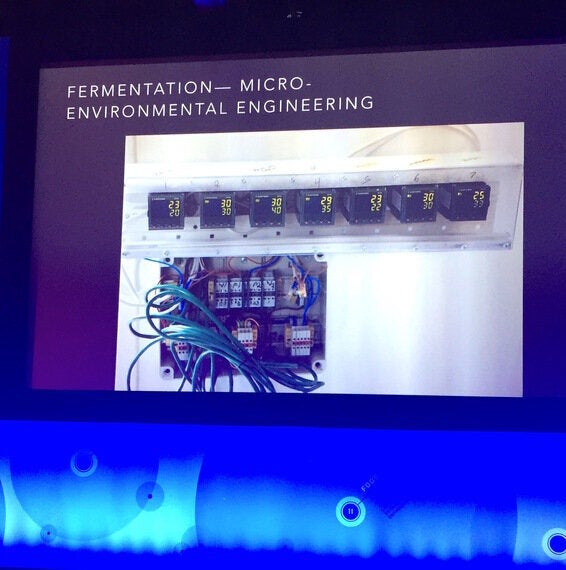
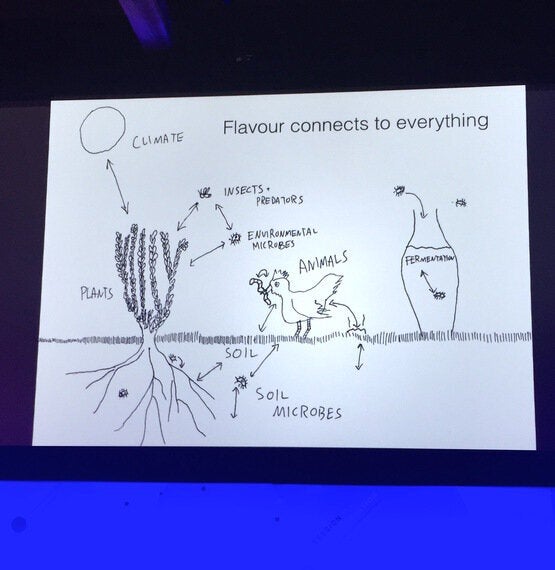
Cute illustrations by flavour scientist Arielle Johnson
We were given a goodie bag of vials from the Noma kitchen to taste during Lars and Arielle's talk, one of which contained fermented grasshopper garum, which had a fishy miso-like flavour. Here's how Lars makes it:
Grasshopper Garum from Rene Redzepi on Vimeo.
Here's Noma's story in the words of Rene Redzepi:
The food-inspired architects responsible for the following imagery, Christopher Pierce and Christopher Matthews take food and turn it into materials, shapes and schematics for buildings and landscapes. Their imagination runs riot and gives rise to a world of food-based experiments that result in fantastical architectural plans.
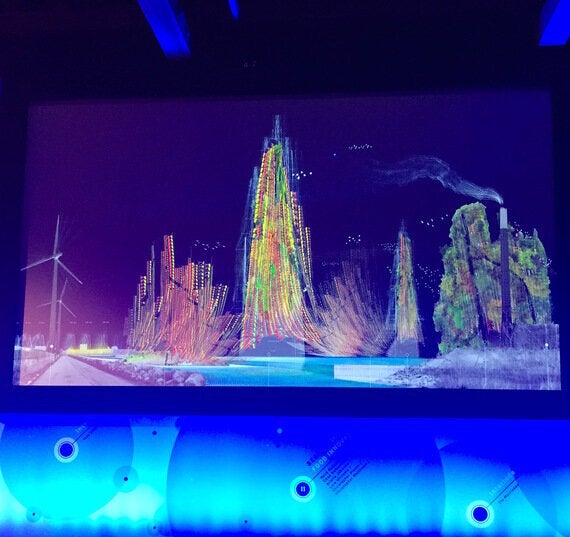
The moving urban farm plan, Copenhagen
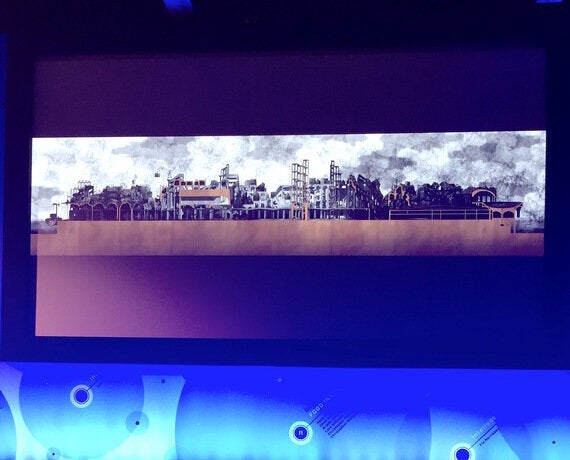
Architectural plan for a city decomposing left to right
The images below are from a project to create architectural plans from leeks. The leeks were dehydrated in an oven and into which porcelain was poured to reveal the dried layers inside, to stunning effect.

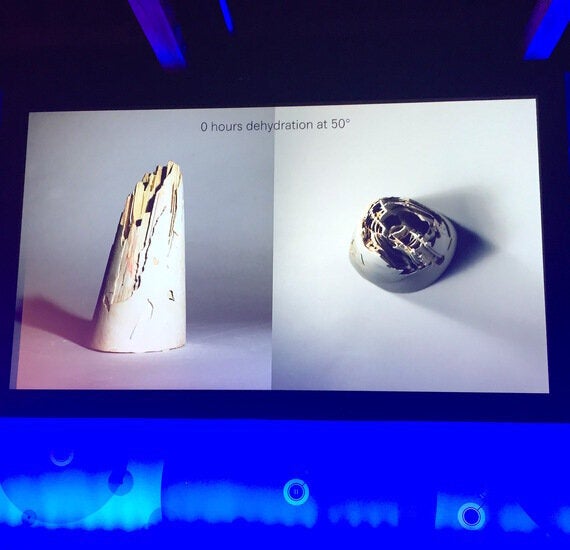
For more information about the two Christopher and Christopher's projects click here
The perfect punctuation for these meaty (sorry, I couldn't resist) talks was live music curated by Denzyl Feigelson, founder of AWAL, including breakthrough Brit artist Izzy Bizu, who is currently touring with Rudimental. She came over to say hi after her stunning performance of White Tiger to let me know my knitted outfit and multi-coloured platform trainers had caught her eye whilst she was singing. I promptly dispensed my card so keep an eye out for Izzy Bizu in Brooke Roberts Knitwear.
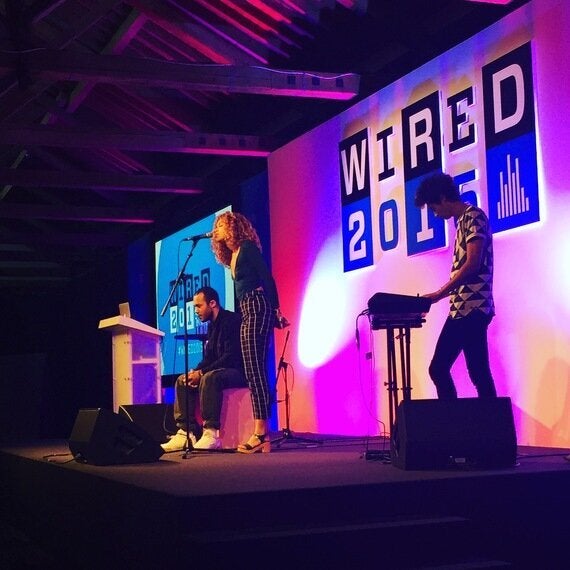
A medical imaging treat came in the form of Neuroscientist Sophie Scott's MRI scan of Reeps One beatboxing. It's a fascinating insight into the function of the brain during execution of complex sounds and the areas of the brain most active while generating them. It satisfied my craving for medical images as an ex-radiographer of two months.
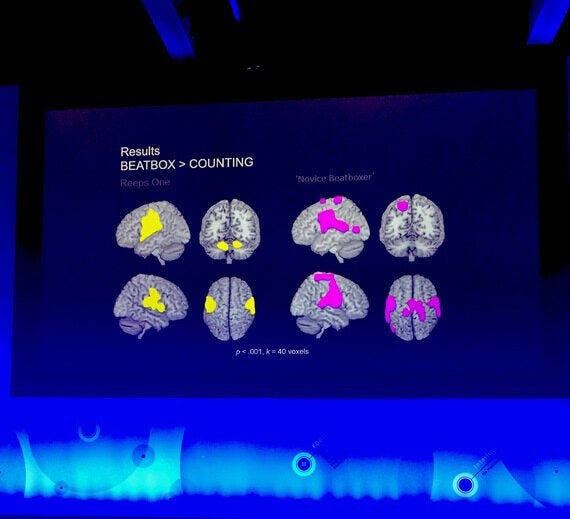
The theme of Intelligence runs throughout all the talks at Wired 2015, whether derived from the application of AI or applied following analysis of Big Data, the future looks set to provide better healthcare, safer roads, cleaner cities and a more connected global community. The day wraps up with a softly-spoken but defiant instalment by Nadezhda Tolokonnikova of Pussy Riot notoriety. Although she didn't speak on digital activism as billed, she lent a voice of independent thought and personal struggle. She spoke of her belief in a life without borders and declared herself a citizen of the world. Opening with a joke that went something like "When travelling, at border control the officer asks 'Occupation'? I say no, just a holiday".
Wearing a dress inscribed "Non Stop Feminist" and "My body is a battleground", apparently echoing the words in artist Barbara Kruger's 1989 piece 'Untitled (Your Body is a Battleground)' - a visual commentary on women's rights over reproduction and the continued feminist struggle - she has an aura of rebellion and delivered a mandate based on living and acting outside the parameters of what she described as slow inert governments. She cited technology as a tool for rebellion and free speech, which seems refreshingly simple after a day of high-concept tech and rampant futurism (not a complaint, it's just a welcome grounding moment to think of the here and now and reflect on where we are).
Reflecting on the talks and ideas shared today by the world's game changers and askers of questions most of us have never come close to contemplating (until now), it strikes me how readily members of the art, architecture, science and technology communities collaborate across disciplines. A chemist working with a chef at Noma, artist Eyal Gever collaborating with NASA on art in outer space, architects working with chefs to develop concepts for buildings and landscapes based on food, and the greatest thing is, the sum of the parts is richer, more surprising and arguably more legitimate for having sought beyond the boundaries of its own discipline. It makes me wonder; why isn't the fashion industry more eager to collaborate with those from other disciplines - scientists, architects, engineers? The idea of legitimacy is a complex one, but it does seem that having outside input and therefore sharing credit for the design and presenting a collective rather than singular 'vision' is something fashion designers and perhaps the industry at large is very uncomfortable with. In fashion, the Creative Director/Design Director is seen to possess the singular vision and takes all credit, making collaboration from an equal (and opposite) professional seemingly unwelcome. I feel fashion's the poorer for it. You only have to look at the discomfort and awkwardness of the current FashTech/wearables offering to see that the fashion and technology industries are not really collaborating yet. The most innovative strides being made in the fashion industry are in sportswear brands like Nike with their groundbreaking "Flyknit" trainers, which are a fusion of shoe design, creative coding, digital industrial knitting and engineering. For all the hype about 'creativity and innovation' in the fashion industry, the visible and lauded designers aren't leaping into the future, innovating or really questioning what is possible and trying something new. They are not ready, or willing, to take the collaborative steps to do so, it appears. The open source aspect of science and technology is a practice fashion could benefit from. How do we learn and grow if we don't share and question what we do? How do we solve complex problems when only looking within the realms of what we already know rather than seeking the perspective and skills of other professions?
As I finish writing this article I get confirmation that Hussein Chalayan has agreed to an interview with me to discuss his contemporary dance collaboration at Sadlers Well, Gravity Fatigue and his work as a fashion designer. So I'll prepare to eat all of the last paragraph's words, thankfully!
Nadezhda closes Wired 2015 with a world exclusive of the new Pussy Riot music video for "Refugee In" shot at Banksy's Dismaland.
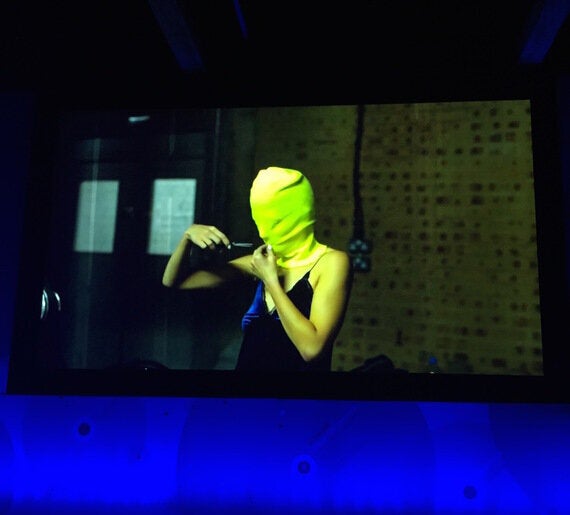
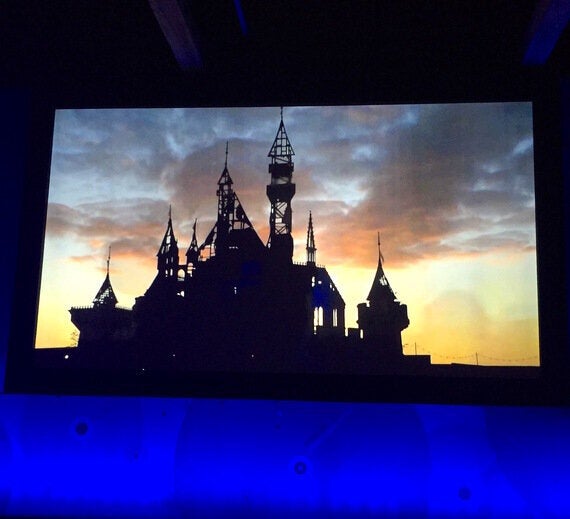
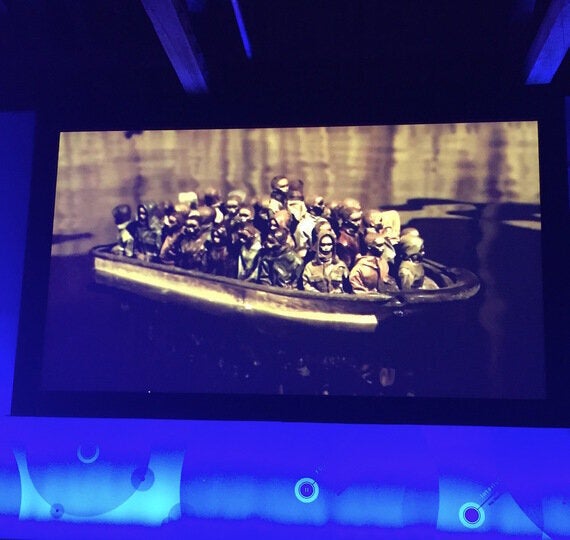
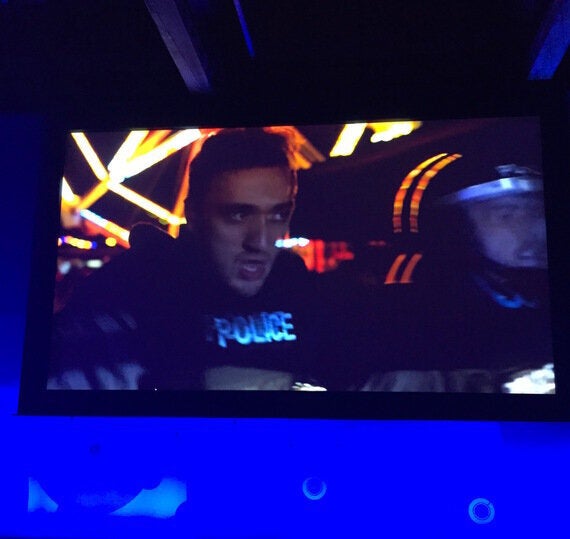
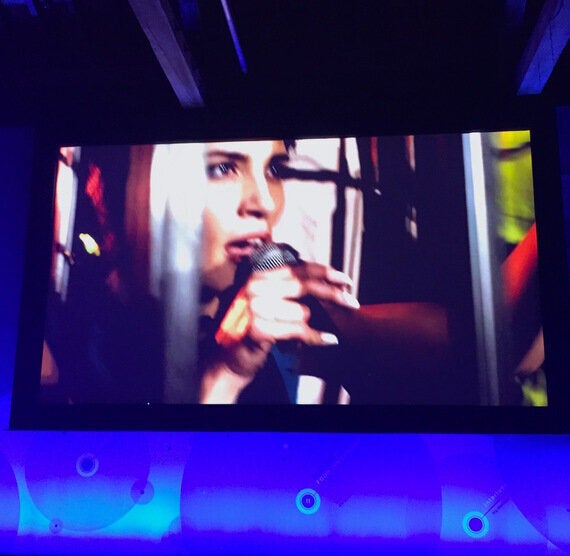
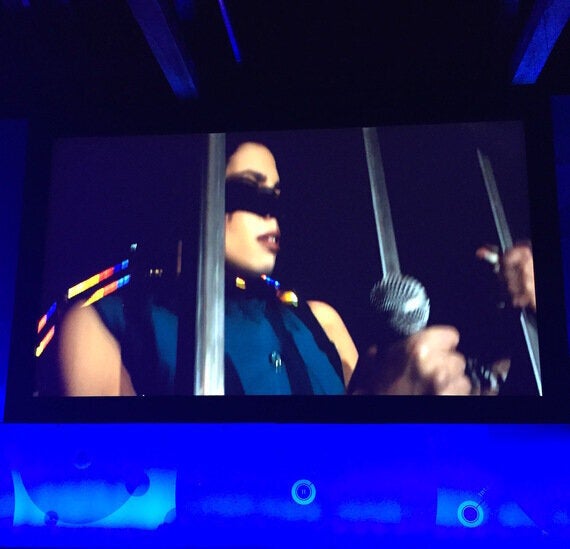
And with a hop and a skip, she's off!
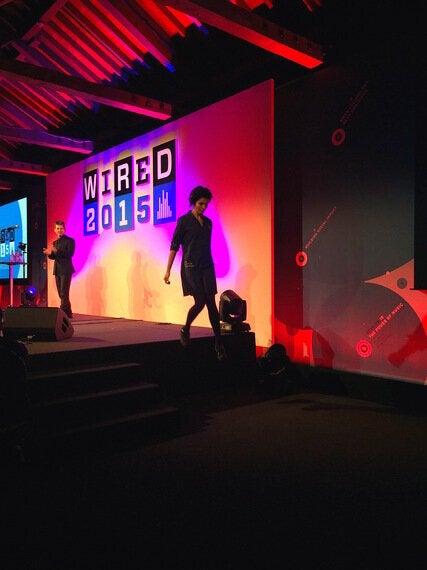
Originally posted on Techstyler.fashion
Follow me: Twitter @Thetechstyler and Instagram @techstyler
